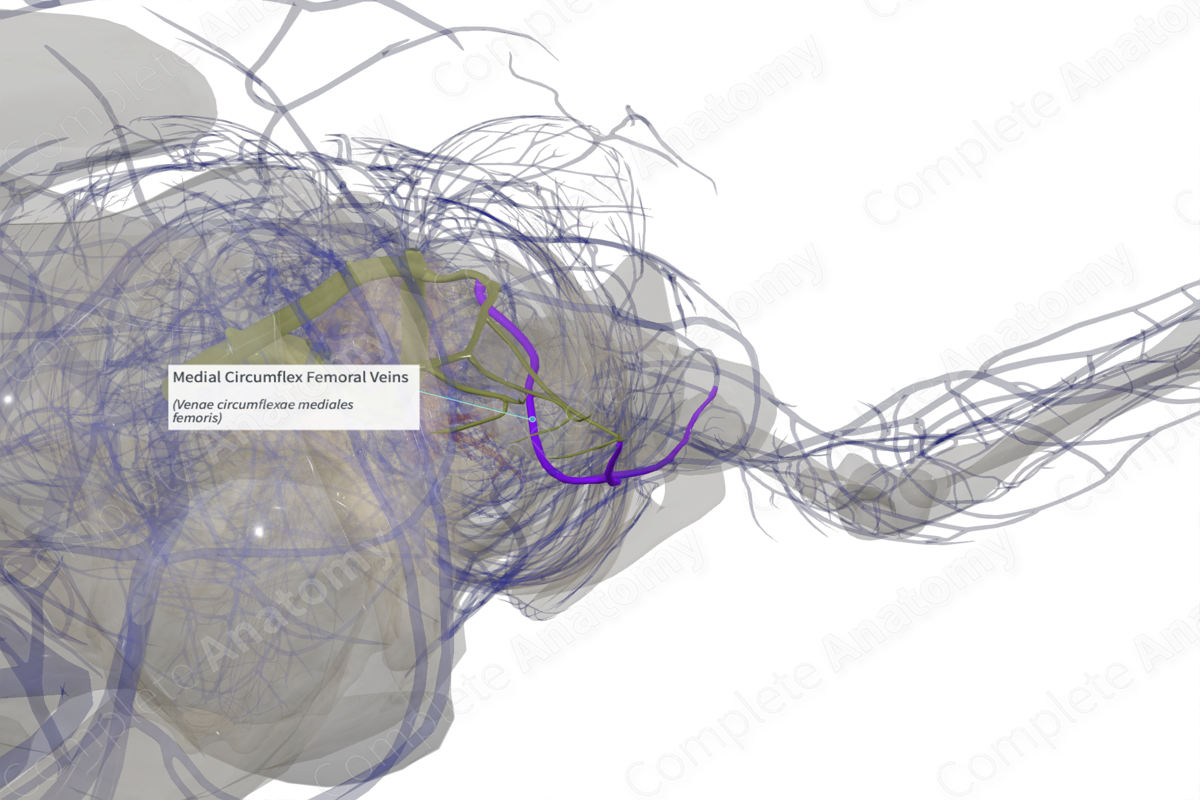
Medial Circumflex Femoral Veins (Right)
Venae circumflexae mediales femoris
Read moreQuick Facts
Origin: Around the proximal femur.
Course: Horizontal course to drain into the femoral or deep femoral vein.
Tributaries: Retinacular veins.
Drainage: Hip joint and thigh muscles.
Related parts of the anatomy
Origin
The medial circumflex femoral vein is formed by the union of unnamed deep, superficial, ascending, transverse, and acetabular tributaries.
Course
From its origin, the medial circumflex femoral vein takes a horizontal course and runs anterolaterally in the gluteal region. It runs between pectineus and iliopsoas muscles and receives many tributaries. It enters the distal part of the femoral triangle and drains into the femoral or deep femoral vein.
Tributaries
The medical circumflex femoral vein receives the retinacular veins which drain the head and neck of the femur. Additionally, the medial circumflex femoral vein receives deep, superficial, ascending, transverse, and acetabular tributaries. These unnamed tributaries closely follow the course of the branches of the medial circumflex femoral vein.
Structures Drained
The medial circumflex femoral vein drains the proximal deep thigh, including the head, neck, and proximal shaft of the femur. The ascending and deep tributaries communicate with the gluteal veins, and the descending tributary communicates with the popliteal vein. The superficial and transverse tributaries communicate with the inferior gluteal, lateral circumflex femoral, and the first perforating veins. Acetabular tributaries drain the head of the femur and the acetabulum.




